Wanting To Give Off-Piste Skiing A Go?
We’ve got all the info you need to get started!
Off-piste skiing can be an incredible experience – one of the truest ways to explore the untamed wilderness of the great outdoors. From feeling the adrenaline rush of conquering steep terrain to discovering hidden gems tucked away among peaceful, snow-covered landscapes, backcountry skiing is a thrilling adventure into the unknown.
However, progressing from groomers into the unknown can be quite daunting, so we’ve put together this article to cover every important aspect and question you may have when it comes to venturing off-piste.
Learn tips on finding the best spots and trails, how to ski safely and responsibly, and much more!
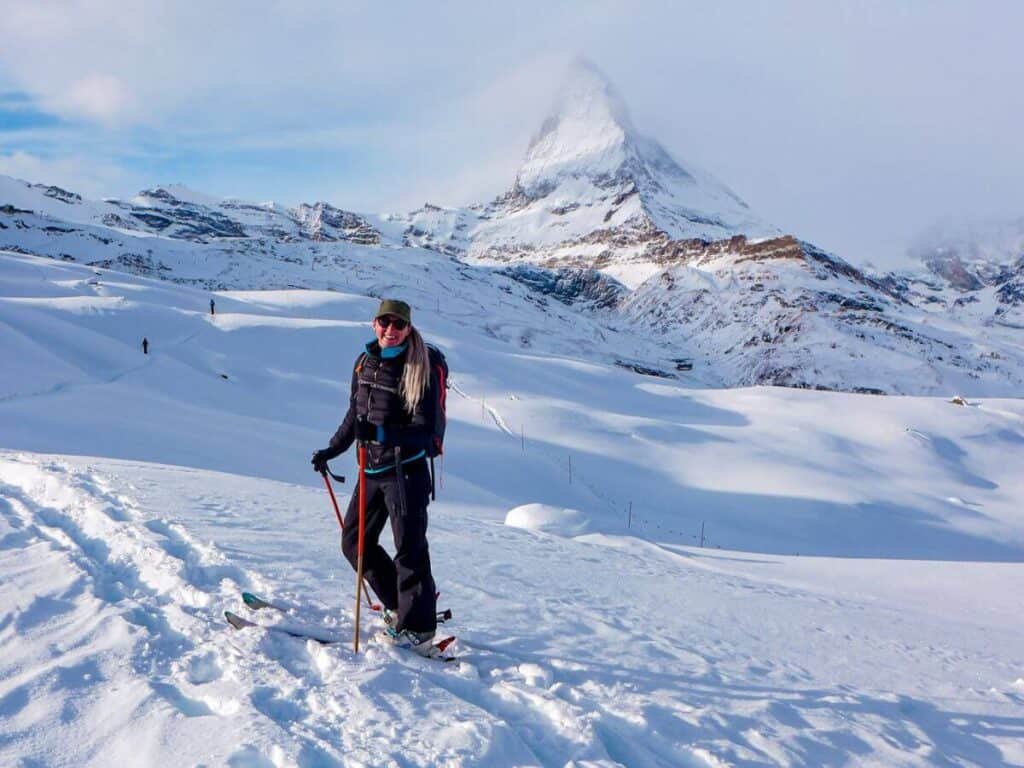
What Does Off-Piste Mean In Skiing?
Off-Piste Skiing is a term used for any ski runs that are not on marked trails, or pistes. This can include steep terrain, bumpy ground, and deep snow.
It is important to remember that these runs can be dangerous so before you jump right into it, take the time to improve your skills by practising on marked trails until you feel confident in your skill level, then dive right in and see what all the fuss is about. It won’t take long before you realise how addictive this sport can be.
Skiing off-piste is not for the faint of heart. Also known as freeriding, backcountry or powder skiing, it means venturing into unmarked territory with often steep terrain and deep snow. Ski runs in this terrain can also be referred to as “out of bounds.”
Skiing off-piste can be dangerous with hidden hazards like rocks, trees or an unstable snowpack, so it’s important to learn as much as possible about how to stay safe.

Why Ski Off-Piste?
Skiers are often looking for new challenges and skiing off-piste is the perfect way to get the adrenaline pumping. Skiing off-piste can be a rewarding experience for skiers of all levels, providing you know your limits.
Skiing off-piste is an amazing feeling that provides new terrain, fewer crowds and a great workout. You can challenge yourself by gradually trying harder terrain as you improve your off-piste skills.
Off-piste terrain can offer much more beautiful, untouched scenery than that of the piste. With the freedom to explore massive landscapes, incredible scenery and the chance to find hidden powder stashes, backcountry skiing is an exciting way to spend a day on the mountain.
The backcountry also tends to be much quieter than skiing on the piste because fewer people venture into this terrain, so if you are looking for peace and quiet this might just be the perfect place for you to ski.
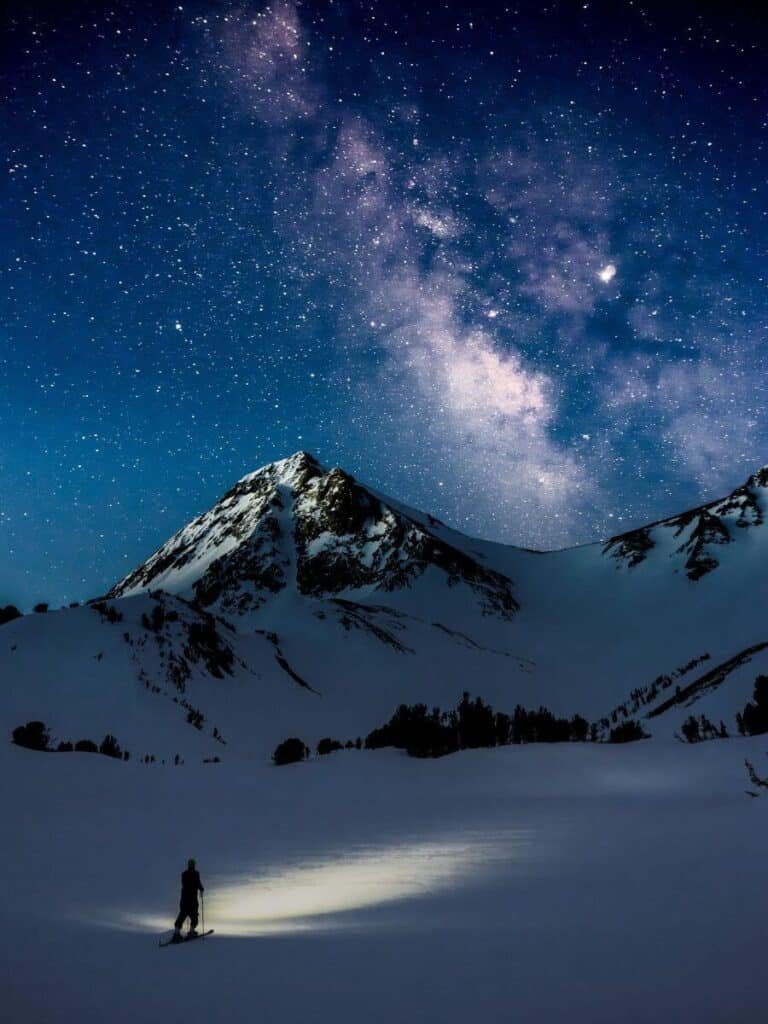
Are Off-Piste Snowsports More Dangerous Than On-Piste?
Off-Piste can be more dangerous due to the extra risk factors that need to be taken into consideration:
Avalanches are the biggest thing to consider when skiing off-piste. They kill over 150 people worldwide each year. However, avalanches can often be avoided by learning how to research the snowpack, weather and conditions for the area you are heading to.
Avoiding a potentially fatal experience by avalanche should always be your number one priority while travelling this treacherous terrain against nature herself.
Mountain guides are equipped with specific training for such occasions so make sure they accompany you until you have the proper training, experience and knowledge to go without them.
Cliffs, trees, rocks, crevasses and other obstacles can cause serious harm and also potentially be fatal to an off-piste skier. Knowing the terrain and where the right places to ski are imperative to your safety, and following tracks in an unknown area also isn’t the safest way to go.
Being so remote can also be an issue as you are further away from help should anything go wrong. So ensure that you have the right local emergency number to call if you find yourself in a bind!
However, if you are sending for help in the off-piste you can expect to wait a while longer to be rescued. Make sure you at least have a properly checked first aid kit, a bivvy bag, spare layers, and plenty of food and water when you are venturing into the unknown.
Although this all sounds doom and gloom and you may now be wondering why anyone would want to ski off-piste, it gets better. With the right training, equipment and knowledge, skiing off-piste can be a really rewarding, exhilarating, fulfilling and freeing experience. You’ll really feel like you’ve been on an adventure!
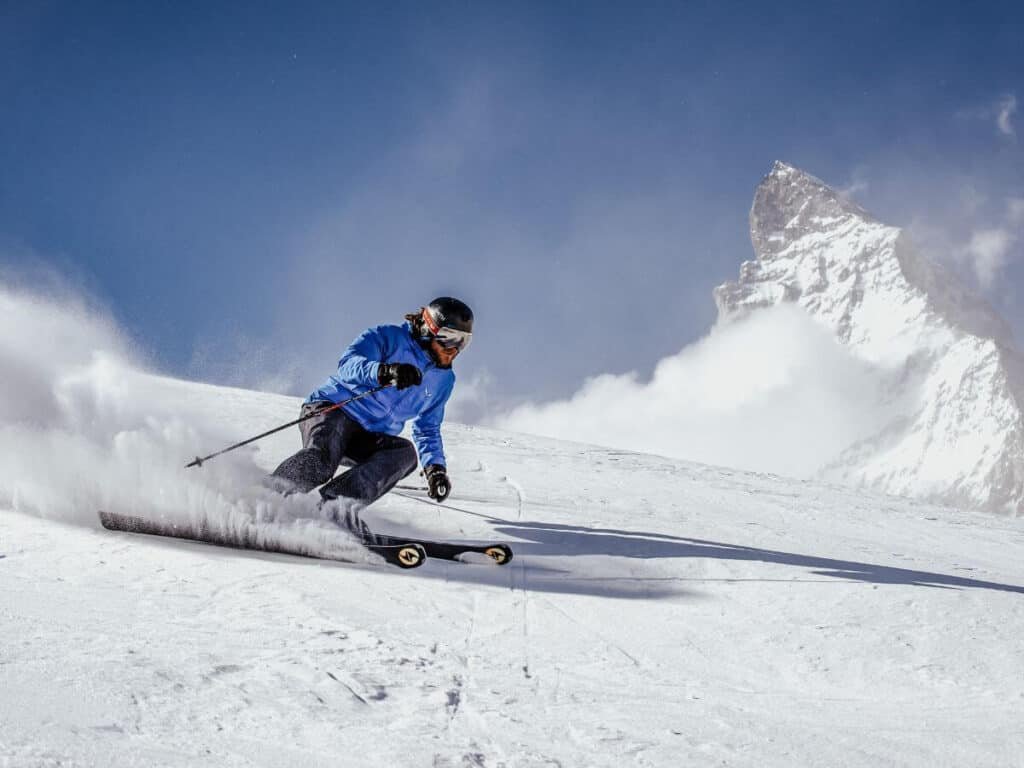
How Do I Learn Backcountry Skiing?
Use The Piste
To build your confidence and ability in preparation for more all-mountain skiing, start by tackling more difficult terrain on the piste or by using the side of the piste for variable conditions (make sure to check these areas are safe beforehand).
You can also head out early in the morning after a fresh snowfall, pistes are usually groomed at the end of the day, so an early start can offer some freshly groomed pistes with a nice layer of fresh powder.
Try Marked Off-Piste
Marked off-piste is an area that is avalanche controlled and marked with poles but not pisted. This gives you the experience of skiing variable backcountry terrain with the same safety precautions as the piste.
If your resort has them, skiing on marked off-piste trails is also a great way to dip your toe into the wider world of all-terrain skiing, however, make sure you feel confident in your ability before you commit to these types of slopes. If you are nervous or unsure of how to begin, we would always recommend hiring an instructor to help with your progression.
Plan, Prepare, Practice
Study freeriding techniques, route planning, map reading and avalanche safety.
If you are feeling ready to really dive into the off-piste, then make sure to invest in some avi gear (avalanche safety) and do some training on how to use all of it. Make sure that you could be depended on in an emergency situation.
For your first big excursions off-piste and away from the resort, hiring a guide to keep you and your group safe is a great option. At the very least, make sure that you aren’t just going out by yourself, and make sure that you trust the ability of those you choose to venture out with.
For some more tips on skiing powder check out How To Ski Powder over at Stomp It Tutorials.
Never ski off-piste alone, the best number of people to ski off-piste with is a minimum of 3.
Powder Skiing Technique
Off-Piste vs On-Piste
A common misconception is that you need a different set of skills and techniques for skiing on-piste and off-piste. In reality, this is not the case.
All of the fundamental skills that you learn and incorporate on the piste are transferable to off-piste terrain. Your body position, the fundamental movements and transference of weight etc…
In fact, the unpredictable and variable nature of this terrain makes it a great place for identifying any chinks in your armour: areas that you may need to improve. Therefore, it is actually a great place to help your technique.
If someone is getting a little big for their boots on the piste, chucking them in a little variable terrain is often a great way to neutralize their ego!
The firmness, consistency, uniformity and ‘trustworthiness’ of a pisted slope can often allow skiers to get away with subpar or lazy technique (not that there is anything bad about that!).
Whereas, the unpredictability of variable terrain, requires you to be more adaptable and have much more of a mastery of all of the fundamental skiing movements and techniques. You can not rely on the comfort of the piste, as no turn is going to feel the same, you have to be constantly making micro adjustments as you ski.
How Can Skiing Off-Piste Improve Piste Performace?
If you viewed it like the levels on a DJ’s mixing table, different elements/ tools in your skiing arsenal might be required in varying degrees. Little tweaks might need to be made at any given moment in off-piste terrain in order to stay balanced and not fall over.
A little more weight of this ski here, lean a little further back here, forward here, more/ less edge here, quicker rotation here, incline more, bend the needs more here… and so on.
So in many ways, skiing off-piste can really help improve your skiing technique, make you more confident and versatile on the mountain and help you to develop a better flow in your performance!
Of course, this takes time, but the only way to get better at it is to put the miles in and get on in there! Even if it’s a little tricky at first, and you need some guidance from a friend or instructor, trust us when we say that it’s well worth it!

Where To Ski Off-Piste
Powder skiing can be found all over the world and the best place is the one you are most comfortable with. One of the major factors in staying safe whilst skiing in the backcountry is knowing the area in which you are skiing.
Some of the well-known places for it are Austria, France, Switzerland, Japan, Canada, and Argentina. In Europe, you will find well-maintained ski resorts with plenty of suitable off-piste and marked off-piste terrain.
Powder Skiing Equipment List
Skis
There is a wide range of choices when looking at off-piste skis and it all boils down to what you want to get out of them.
All Mountain
If you are looking for something all round that will perform well on the piste as well as off-piste, then you’re going to want an all-mountain ski. It pretty much does what it says on the tin. All mountain skis tend to be slightly wider and lighter than piste performance skis and often have a rockered tip.
Freeride
For something that will handle ok on the piste but is more designed for the off-piste then a slightly wider freeride ski would be a good option. Freeride skis mostly come with a tip rocker to help you float in the powder.
Powder
Powder skis are often wider and longer than piste skis, with either a full rocker/reverse camber or a combination of camber and rocker to help you float in the deep powder.
However, they will not give you the best on-piste experience. So, if you are someone that loves getting high performance, carvy turns on piste, but who also loves effortlessly floating on powder days… you’re probably going to want two sets of skis.
Touring
You can also create a touring set-up on either lightweight touring skis, freeride or all mountain skis. This gives you much more freedom to roam. The lightweight skis tend to be favourable for those who are more about the uphill, freeride and all mountain skis are preferable for the downhill.
Our advice is if possible try out a variety of different styles of skis until you find the one that best fits your budget, style of skiing and location. Not all resorts are built the same, if you are based in Europe you might benefit more from an all-mountain ski, whereas places like North America and Japan which receive much heavier snowfall would get plenty of use out of big wide powder skis.
For more information on ski profiles and camber vs rocker check out this post on Wagner Skis

Poles
You can use your regular poles to ski off-piste, but if you are in deep snow it’s more beneficial to have poles with slightly bigger baskets. For something versatile, you can opt for extendable poles that you can change the length of depending on the type of skiing you are doing, or if you are touring up or coming down.
Ski Boots
As with skis, there is a huge choice of ski boots to accompany you on your freeride journey. Again this will come down to your budget, preferences, and style of skiing.
Freeride
For those who are opting for something to perform on-piste as well as off-piste a freeride boot will be the best option. These usually have a stiff enough flex for the piste and more comfort for off-piste. They also often come with a walk mode and some are compatible with all 3 types of binding: alpine, touring and pin.
Touring
Touring boots come in two types, performance and lightweight. As with touring skis, this setup will be more about the uphill than the downhill and is not the best option if your main goal is to enjoy those cruisy powder turns.
Outerwear
Ski Jacket & Trousers
You can wear your regular ski jacket and trousers for powder skiing but if your outfit is bulky and you are wanting to do lots of ski touring, you may want to consider something light that you can layer underneath.
Goggles & Gloves
Your piste goggles and gloves will work just fine, we like to always have a spare lens that can quickly be swapped if we know the weather may change during the day. Low-light lenses are really handy when those clouds come over.
We also tend to have a pair of thinner gloves for warmer days, plus always take a spare pair of gloves if we are out touring for the day. Nothing worse than if your gloves get wet whilst out in the middle of nowhere, cold hands suck!
Helmet
There may be a lot more tumbles than usual, especially when you are starting out, not to mention the extra dangers of rocks, trees, cliffs and crevasses. It is strongly advised to always wear a helmet when freeriding.
Avalanche Kit
Transceiver
This is your most important bit of kit, knowing how to use it can save a life, and perhaps that life will be yours. Having a reliable, easy to use transceiver that you are comfortable with is super important. This is also known as a beacon or a peep (or piep, which is a brand).
A transceiver is an electronic device that sends out a signal in order to be located, or to track other transceivers nearby. If someone is buried in an avalanche this is how they are located, everyone in the group needs to have and know how to use a transceiver. Your transceiver should be worn close to your body, underneath layers and not in your backpack so they can’t be ripped off during an avalanche.
Probe
Once your transceiver locates the position of the person you are searching for, you then need to probe, as they may be buried deep in the snowpack. A probe is used to find the person’s exact location and to see how far down is necessary to dig.
Shovel
It’s no use having a transceiver and probe to locate someone if you don’t have the tools to dig them out. A lightweight shovel with a detachable handle will fit perfectly in your backpack.
You can buy kits that include a transceiver, probe and shovel. Our favourite is the Mammut Barryvox, which is rated as one of the best on the market.
Learning how to properly use your avalanche safety kit, and then consolidating this by practising regularly with the people you ski off-piste with is vitally important. You want to make sure that everyone is comfortable with their gear and their roles during an emergency situation. All the gear and no idea can be fatal when backcountry skiing.
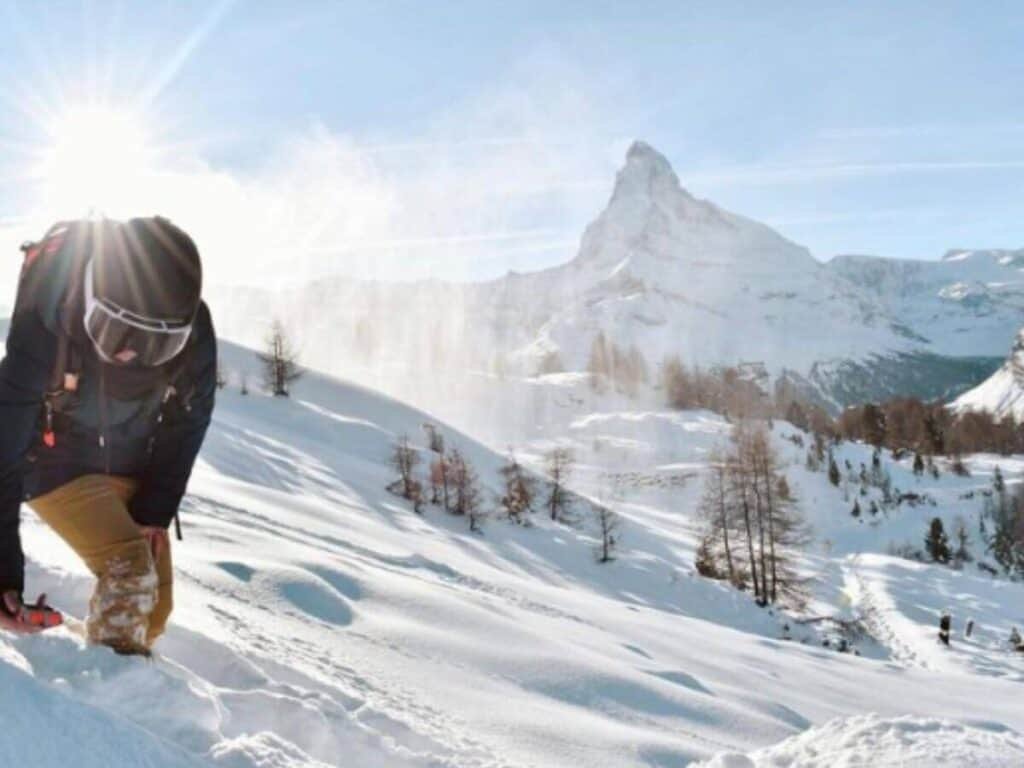
Backpack/Air Bag
There’s a lot of debate about whether air bags are a good idea for backcountry skiing or not. You would assume that they are a great idea, but the media has overinflated their capabilities as “the thing that will save lives”.
And while yes, this is true in some cases, it’s not true in all. Having an airbag doesn’t mean you can skip on all the other safety knowledge when it comes to powder skiing and unfortunately, this is what can happen.
People start to rely on their airbag rather than their risk assessment. We don’t want to sway you either way as we think skiing with or without an airbag is a personal choice. Do LOTS of research into the arguments for and against an airbag before making your decision.
Whether you opt for a regular backpack or one with an ABS system make sure it’s got everything you need in terms of size, weight, pockets, enough space to keep your avalanche safety kit and easy access to water.
First Aid Kit
Having a first aid kit when skiing off-piste is really important, you don’t know how long it could take for someone to get to you or for you to get down in an emergency. Having at least the basics and some understanding of how to use them in certain scenarios can stop a situation from escalating into a panic.
Bivvy Bag / Foil Blanket
If you find yourself in a situation where you have to wait for a long time in the snow, having a bivvy bag or a foil blanket will keep you warm in the meantime.
Extra Layers
The mountains are tricky places and the weather can change in an instant, having layers in your bag to put on, or space in your backpack for layers you need to take off can be essential. Hypothermia and hyperthermia are both things to be aware of at all times on the mountain, but especially when you are in remote locations.
Food & Water
If you are venturing far into the wilderness it’s always a good idea to carry snacks and water, or if you’re like us, on good weather days you’ll want to find a nice quiet spot for a picnic.
Insurance
Make sure your travel/ski insurance covers you in the off-piste. An airlift in a heli can be extremely costly if it’s not covered under your policy.

Avalanche Safety
As well as learning how to use your avalanche safety kit, it’s important to learn about snowpack, how it forms, what to look out for and how to stay safe at all times. Just because you know how to use your gear, doesn’t mean you can just head out and ski anything. Different snow conditions can be fatal, even to mountain guides. It’s important to learn where is safe and where isn’t.
What Causes An Avalanche?
An avalanche is when a weak area of the snowpack collapses and slides downhill, taking with it the mass on top. Avalanches are the result of a snow layer collapsing and sliding down the slope.
The occurrence of an avalanche depends on four factors: a slope with enough inclination, snow cover, a fragile layer within the snow cover, and a trigger.
What Is A Snowpack?
A snowpack is the total amount of snow that has fallen in a given time. Which is continuously deforming throughout the season due to temperature changes, resulting in multiple layers of snow from each snowfall. The weight of each snowfall compacts the layers. Each layer can be affected by different weather factors.
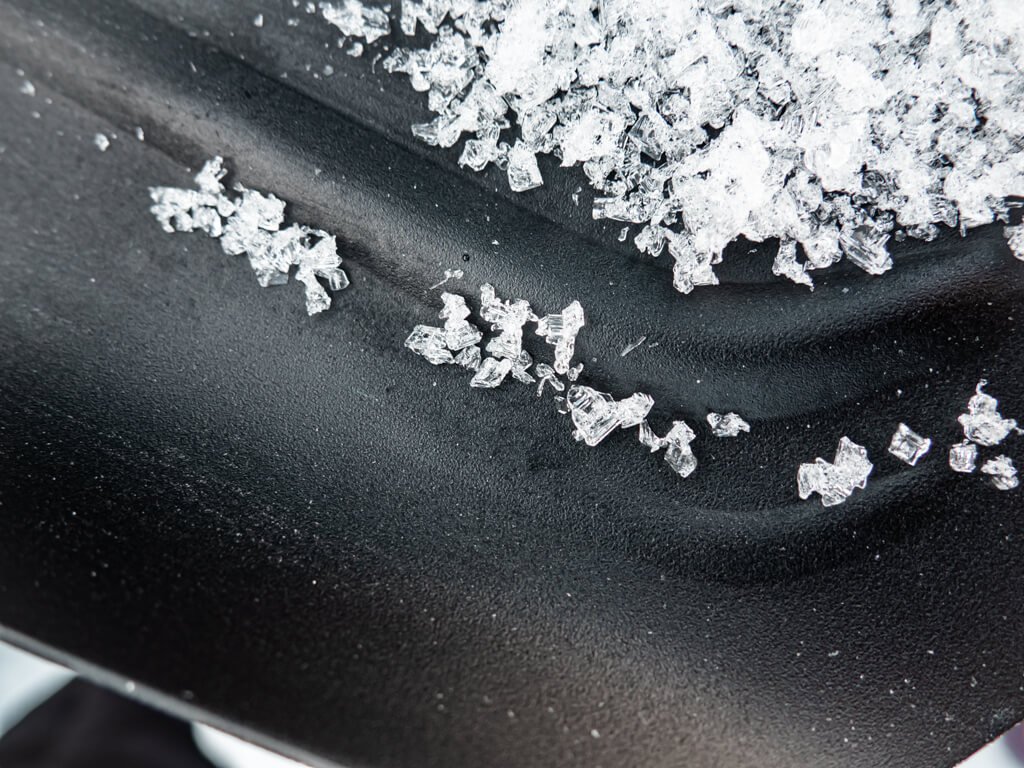
Off-Piste Advice From The Experts
The perfect powder day can become a day from hell in an instant. Finding yourself in an avalanche is a skier or snowboarder’s worst nightmare. But sometimes even when you think you’ve checked all the safety boxes, the unexpected can happen. So as well as our safety tips, I sought out off-piste advice from a few experts.

Brian Farquharson
is an international mountain guide who runs avalanche awareness courses in the alps. Originally from Scotland, Brian moved to Switzerland 39 years ago and spends most of his time between Zermatt and the Bernese Oberland. Brian has been a mountain guide for 22 years and also guides in 8 countries around the world.
What Is Faceted Snow?
Faceting is when the snow crystalises rather than bonds together to form a strong layer, forming an almost sugar like thin layer (sometimes almost naked to the eye). These fine unbonded grains are one of the major causes of avalanches.
Why Is Wind-Affected Snow An Issue?
As snowflakes fall they spin and grow. The spikes on snowflakes are known as legs, but when the snowflake falls through wind the wind breaks off the legs, which is called rounding. The legs are what bond the flakes together to form a snowpack.
- Fewer legs = less binding
- wind creates unstable crystals.
“People get caught up in powder fever and they are so eager to go off-piste that they don’t necessarily take all of the right precautions.”
Common Mistakes From Mountain Users:
One problem is people get a false sense of security. They’ll ski a run they’ve skied a hundred times and think it’s safe because they ski it often. Snow changes and the weather changes, no slope is the same every day.
People get caught up in powder fever and they are so eager to go off-piste that they don’t necessarily take all of the right precautions.
Is Avalanche Terrain Safer After A Slide?
These areas are called “After Avalanches”. The issue here is the area above the avalanche. The snow above also wants to break off and flow downhill, called a downhill creep.
With the previous avalanche, there is now nothing holding the snow above it up. 12% of avalanche victims are people caught in after avalanches. The best advice in this terrain is to still always treat it as if it will slide.
“The more skills and information you have the fewer bullets are in the chamber but don’t forget there will always be one bullet left”
! Never Become Complacent !

If you’d like to learn more from Brian you can purchase his book Avalanche Know How
For more about Brian or to book him for guiding or avalanche training head to:
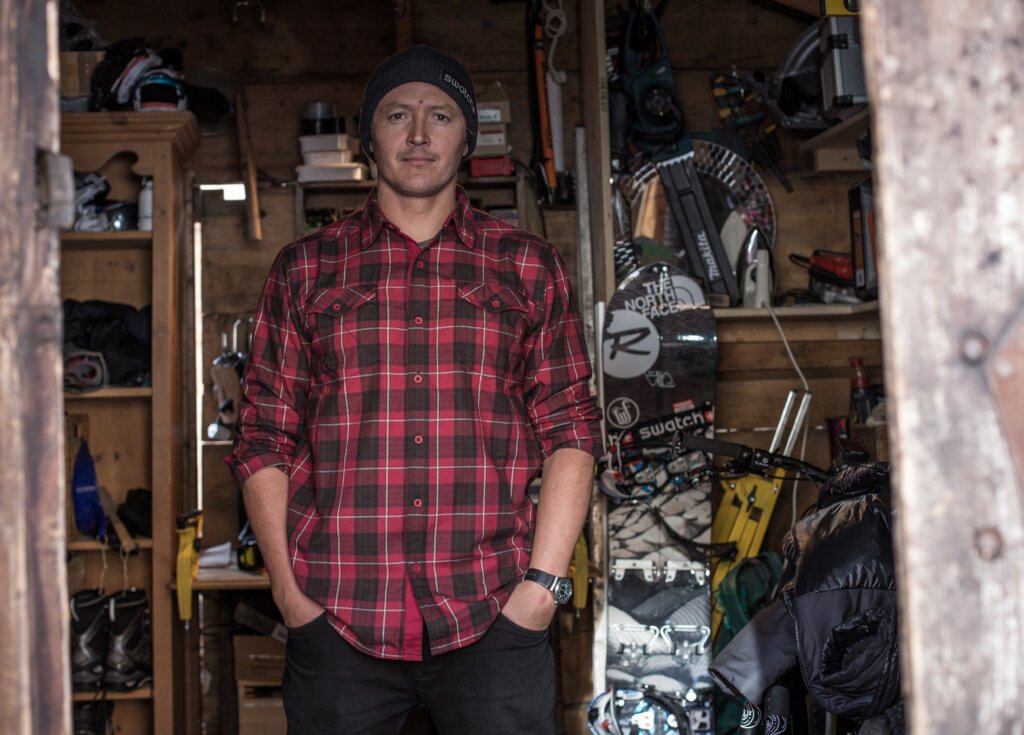
Xavier De Le Rue
is a French big mountain snowboarder, 4 x World Boardercross Champion, 3 x Freeride World Tour Champion and has lived in Verbier, Switzerland for the past 19 years.
Tell Us About Your Experience In Dealing With Avalanches.
In Verbier a couple of years ago I witnessed a large avalanche coming through “Rock n Roll couloir”.
I went straight to search the debris. Seeing someone buried to their waist with their airbag pulled I felt relief that they were not completely submerged. I went to check that they were fine before continuing the search.
It was my friend, and he was not fine, through the avalanche he had sustained a head trauma that ended his life. The avalanche slid in an unusual way, it was something I’d never seen before. They had to cross a pocket of snow to get to the entrance of the Couloir. This is what slid, I have never seen it slide on that scale in my whole time in Verbier.
The danger didn’t seem to be as clear that year, it was totally unpredictable. Usually, the snowpack heals but that year it didn’t seem to be healing. The problem with riding off-piste is that it’s more of a gamble than any other sport. Sometimes you can do everything by the book and still get screwed.
“The problem with riding off-piste is that it’s more of a gamble than any other sport. Sometimes you can do everything by the book and still get screwed.”
We always have a faceted layer but normally there is some sort of stability. That year we had no snow cover for so long so nothing was ridden, then it seemed like nothing was stable or predictable.
Slabs breaking on the steep faces of Verbier:

What Extra Precautions Can People Take When Riding Off-Piste?
Stick to low elevation or shallow slopes
Always ride one at a time from pitch to pitch.
Ride from point A to point B, safe point to safe point.
Treat every place as if it will slide no matter how safe it seems. This is something I always do and it should become part of your behaviour.
Only ride with people that you trust and who know how to use their safety equipment.
Turn back or stay home.

For more about Xavier head to https://www.xavierdelerue.com/

Sam Anthamatten
is an Alpinist, Mountain Guide and one of the world’s best freeriders. Born and raised in Zermatt.
I Spoke To Sam About The Unusually Dangerous Off- Piste Conditions In Zermatt in 2020/21:
We are definitely facing a dangerous Winter Season 2020/21. For most of the season, the avalanche danger level 3 was constantly shown. A lot of regions were often changing to danger level 4 and we also had danger level 5 out of 5, which is rarely seen.
But Why?
So if we look back to the beginning of winter it was really dry from September – January, yes we got some snowfalls but they were really small and in between we had good weather, wind and cold temperatures. Low-tide snow years are more dangerous as a thin snowpack is weaker.
This is the perfect recipe for unstable layers, the snow crystals are refreezing and growing to plates/cups, which are not binding anymore, they become ball-bearing like. So we have a lot of really weak layers close to the ground and now it has been snowing heavily on top, often a big storm with warm temperatures can stabilise the whole snowpack, but during the 20/21 season the weak layers were too big. The result is a heavy snowpack with tension on top of a house of cards.
By digging a snowpit to check the different snow layers you can easily see the “Altschnee-Problem“ which lies in the lower snow layers. I think everyone who is skiing off-piste should do that!! Digging a snow pit reveals the weather during a season and its influence on the snow, which shows the architecture of the snowpack.
Now we only need to trigger the hotspot and the consequences are fatal! Avalanches can reach huge sizes because they slide to the ground. It’s not only a top layer, it’s the whole snowpack that collapses.
“The result is a heavy snowpack with tension on top of a house of cards. Now we only need to trigger the hotspot and the consequences are fatal!”
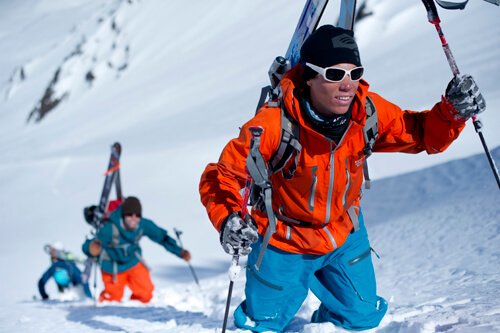
For more about Sam head to http://www.anthamattens.ch

Sam Parkes
is from the West Midlands, UK. He’s a Brevet Federal and has been in Zermatt for 10 years, skiing and teaching off-piste is his passion.
We spent an afternoon with Sam digging a snowpit, learning about the different snow layers and doing what is called a sliding block test.
Digging a Snowpit
We marked an area of around 1.5m x 1.5m and dug down to the floor.
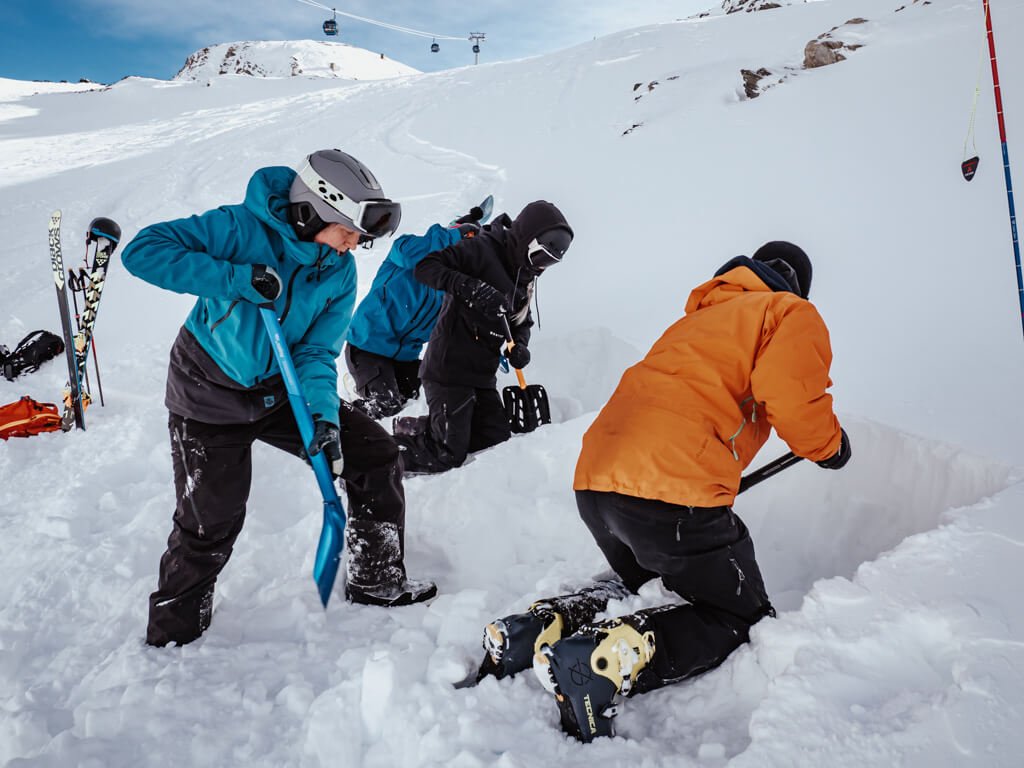
What Did We Find?
The top of the snowpack was nice solid compact snow, but further down we found a wind-affected and faceted area. Sam showed us how to spot the different layers by running a card from top to bottom and marking where we felt the consistency of each one change.
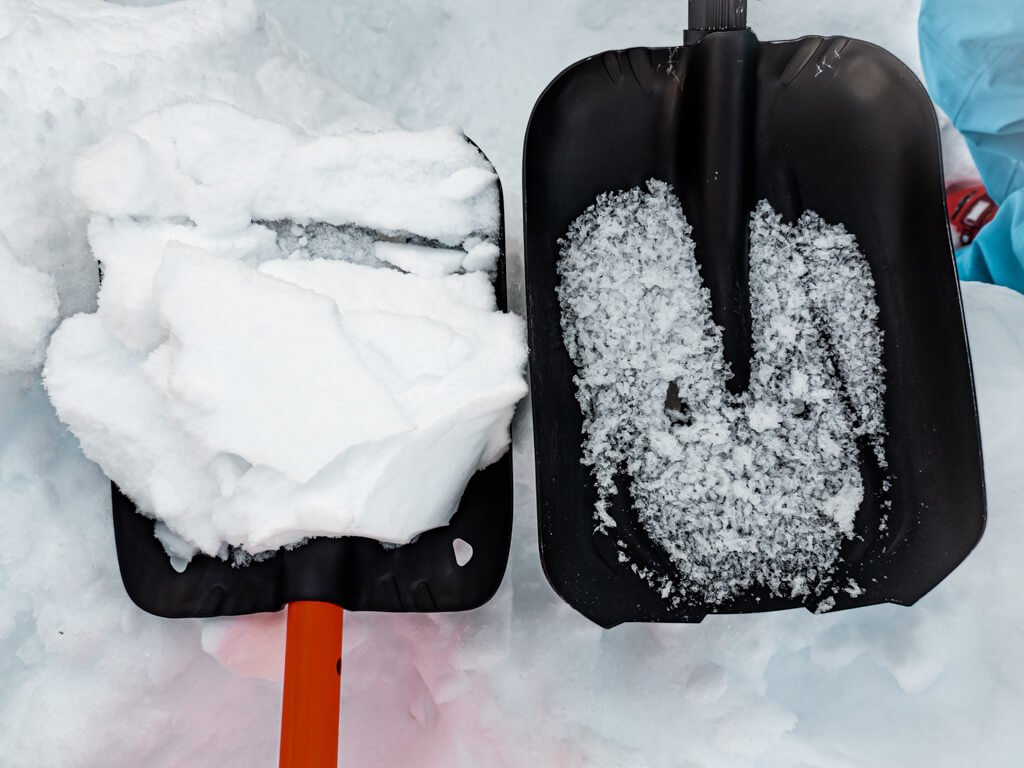
Is This Normal Sam?
It’s completely normal for there to be a faceted layer at the base, the issue is with how big that layer is. The larger it is, the more unstable it is.
Sam: “So do you want to do a sliding block test or an isolated column test?”
We all looked confused but after some explanation decided to opt for more digging! An isolated column test is where you isolate a small area or column from the rest of the snowpack.
Compression from the top in a series of taps is performed to see which layer fails and collapses the column. This can be done by placing a shovel at the top of the column and tapping with increased pressure until it fails.
A sliding block test is where you isolate an even larger area, big enough to stand on with your skis and do the same exercise with jumps rather than taps.

Are There Slopes That Are Deemed Safer To Ski Off-Piste?
30° slopes and above is where the perceived avalanche danger is. A slope of 25° would be deemed safer as there isn’t as much gravitational pull to help generate momentum on a slope of this angle.
What Advice Do The Experts Have For You To Be Safer Off-Piste?
- Know your limits and ski to your ability
- Know and always wear your avalanche safety gear
- Never ski off-piste alone
- Only ski off-piste with people you trust
- Practice avalanche safety regularly with the group that you ski with
- Get to know the avalanche risks in your area
- Check avalanche reports and ask local guides
- Know how to decipher the information in avalanche reports or apps
- If you’re unsure, turn back.
Please take note of our advice from the experts if you plan to ride off-piste this season. Stay safe out there!
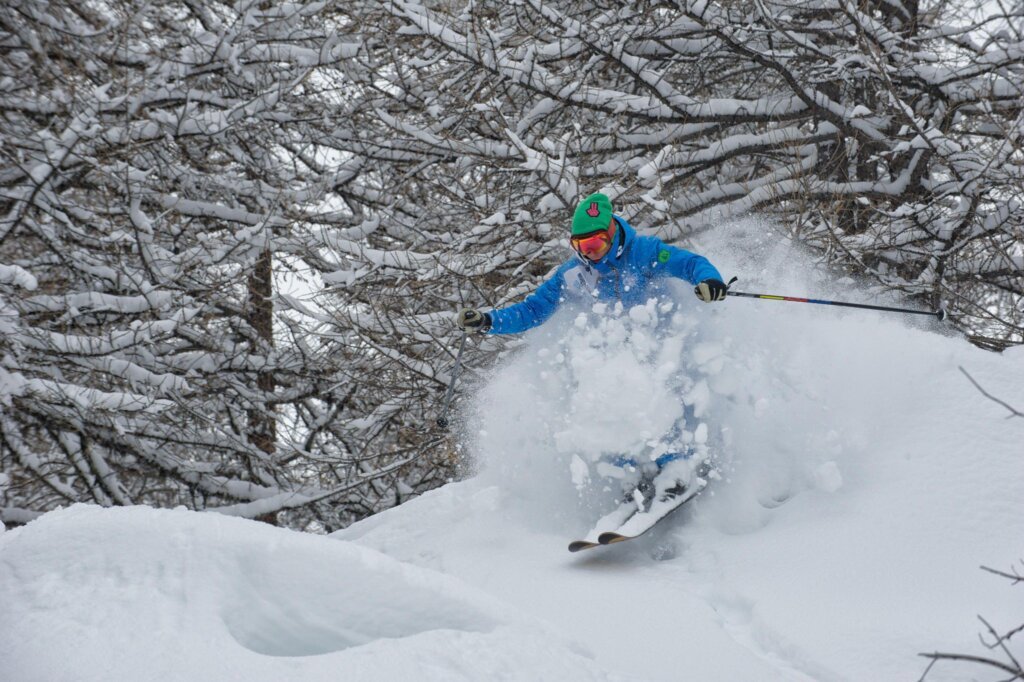
The Wrap-Up: Off-Piste Skiing | The Ultimate Guide
Skiing off-piste is an exhilarating experience, but it’s important to keep safety in mind. Make sure you equip yourself with the right gear and knowledge. With that being said, if you’re looking for a unique and thrilling skiing experience, off-piste skiing can’t be beaten! Just remember to always be aware of your surroundings and always ski within your abilities.